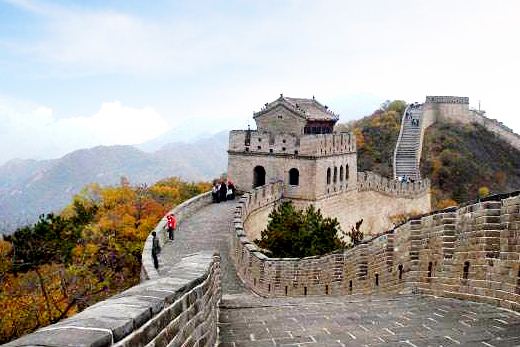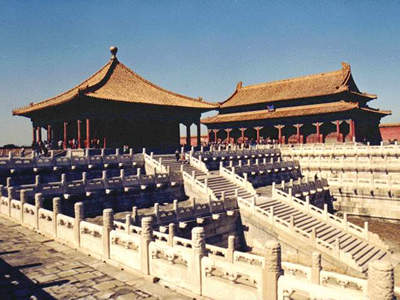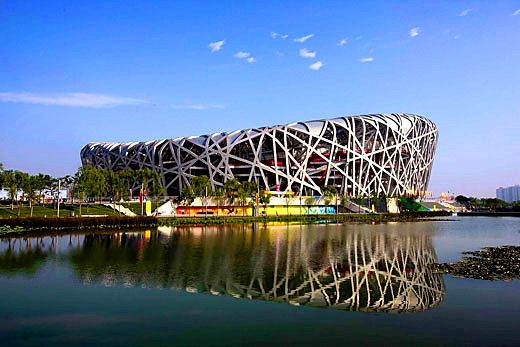The siheyuan is a featured ancient Chinese architecture of residence commonly found throughout China, especially in the Beijing. The name literally means a courtyard (quadrangle), a yard surrounded by four buildings, which are always one storey high, or we can say “a four-side enclosed courtyards”. It was designed to make it as comfortable 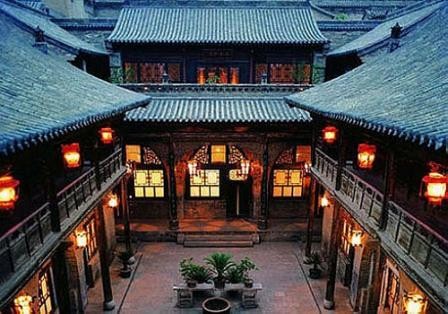 as possible for people to live in a climate which sometimes is inhospitable. As siheyuan is enclosed and inward facing, it protects dwellers from the harsh winter winds and the dust storms in spring and it is good for security. The design also reflects the Chinese traditional culture following the rules of feng shui, Confucianism and the patriarchal that were very important in the feudal times.It was built with no steel or concrete, the entire dwelling was built of bricks and wood. The compounds are quiet, beautiful and compact. Grown with plants and flowers, the courtyard is also a sort of garden. The siheyuan composition in old China was not only residences but ancient palaces, government offices, temples and monasteries.
as possible for people to live in a climate which sometimes is inhospitable. As siheyuan is enclosed and inward facing, it protects dwellers from the harsh winter winds and the dust storms in spring and it is good for security. The design also reflects the Chinese traditional culture following the rules of feng shui, Confucianism and the patriarchal that were very important in the feudal times.It was built with no steel or concrete, the entire dwelling was built of bricks and wood. The compounds are quiet, beautiful and compact. Grown with plants and flowers, the courtyard is also a sort of garden. The siheyuan composition in old China was not only residences but ancient palaces, government offices, temples and monasteries.
The “main house” of a siheyuan is the one at north end facing the south. The ones on both sides are called “side house” and the one standing at the south end facing north is called “opposite house” or south house.
The siheyuan’s gate is usually at the southeastern corner according to the traditional concepts of five elements that were believed to compose the universe, and the eight diagrams of divination. Stepping over the high wooden base of the gate of a large compound, you will find a brick screen-wall inside the gate. It prevents the outsiders to peep in and it is good for protecting against dust and storms as well. It is also believed to protect the house from evil spirits. The doors of the gates are usually vermilion-painted and have large copper door rings on and there is a pair of stone lions standing on each side of the gate. Usually a whole family lives in compound. The elders live in the main house, the younger generation lives in the side houses, and the south house is usually their sitting room or study.
Some dwelling compounds consist of several courtyards but some only have one. You could tell the siheyuan belonging to ordinary person or the powerful and rich from the size, style and how many courtyards it has. The ordinary person only has one courtyard with four houses on every side.A mansion of a rich family would have two or more courtyards, one behind another, with the main building separated from the view of the southern building by a wall with a fancy gate or by a walk-through pavilion. Behind the main building there would be a lesser house in the real and connected with the main courtyard.
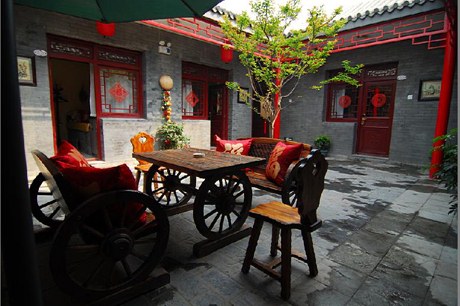 These peaceful Sihyuan has become less and less since liberation in 1949. Since 1949, a large –scale construction program has been carried out in the city, causing the demolition of some dwelling compounds. During the initial post-liberation period, government offices occupied some quadrangles. Later they were demolished to build office buildings. During the "Cultural Revolution" (1966-1976), air-raid shelters were dug everywhere in Beijing, resulting in the destruction of some dwelling compounds. In recent years many residential buildings have been constructed to ease the housing shortage and provide better accommodation for the people. Some were built on the sites of demolished dwelling compounds. Outer compounds have been changed or distorted beyond recognition because the residents have added kitchens in the courtyards. Today, Beijing still has about 400,000 residential siheyuan, mainly distributed over the East, West, Xuanwu and Chongwen districts of the city. Those in the East and West districts are in the best shape. The departments concerned with the preservation of cultural relics in Beijing have earmarked a number of good-quality dwelling compounds for protection. In addition, the urban construction departments have worked out a plan to limit high buildings in the city proper to protect the dwelling compounds.
These peaceful Sihyuan has become less and less since liberation in 1949. Since 1949, a large –scale construction program has been carried out in the city, causing the demolition of some dwelling compounds. During the initial post-liberation period, government offices occupied some quadrangles. Later they were demolished to build office buildings. During the "Cultural Revolution" (1966-1976), air-raid shelters were dug everywhere in Beijing, resulting in the destruction of some dwelling compounds. In recent years many residential buildings have been constructed to ease the housing shortage and provide better accommodation for the people. Some were built on the sites of demolished dwelling compounds. Outer compounds have been changed or distorted beyond recognition because the residents have added kitchens in the courtyards. Today, Beijing still has about 400,000 residential siheyuan, mainly distributed over the East, West, Xuanwu and Chongwen districts of the city. Those in the East and West districts are in the best shape. The departments concerned with the preservation of cultural relics in Beijing have earmarked a number of good-quality dwelling compounds for protection. In addition, the urban construction departments have worked out a plan to limit high buildings in the city proper to protect the dwelling compounds.
Now in Beijing, dwelling siheyuan is the one important aspect of the city’s architectural heritage. They are well preserved. Beijing residents like to live in them and they also attract many foreigners. Some foreigners even bought a siheyuan to live in.


 About Beijing
About Beijing 
